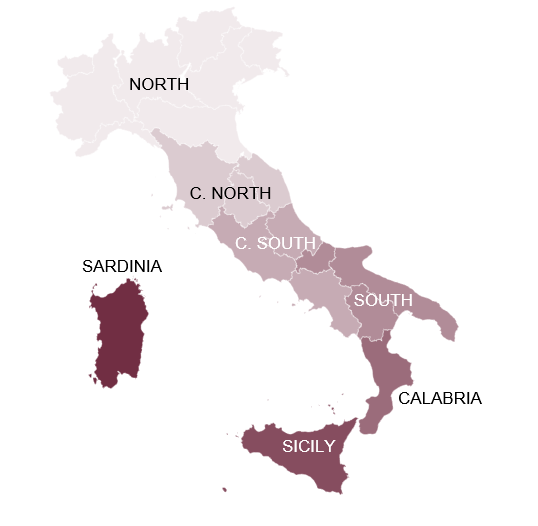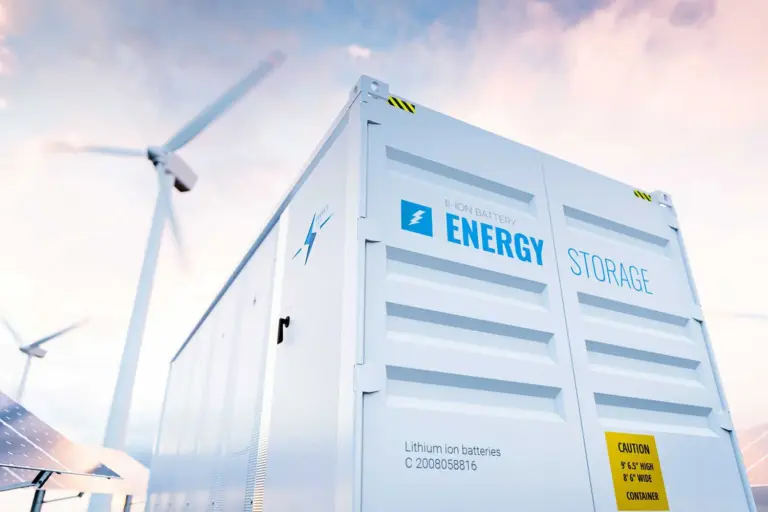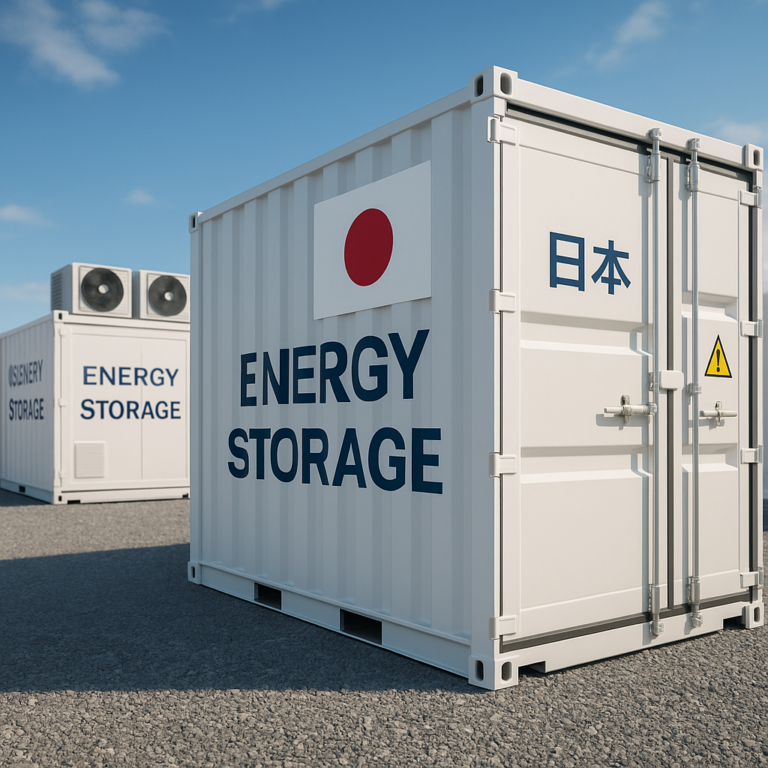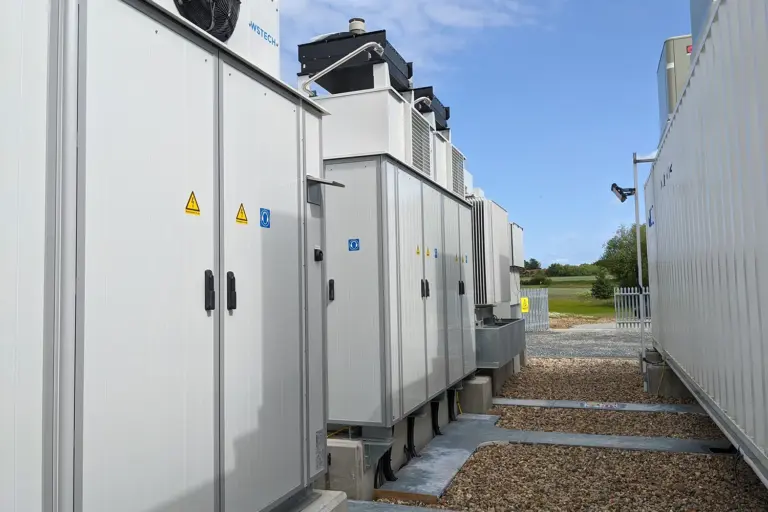
How Italy is Driving BESS Investment
This blog is the latest addition to our new series, “Introduction to BESS (Battery Energy Storage Systems) Markets”. In this blog, we review market developments and key drivers for BESS in Italy.
Key Takeaways:
- Renewable Energy Targets: Italy aims for renewables to contribute over 40% of gross final energy consumption and 65% of electricity consumption by 2030, driving significant growth in renewable energy installations.
- Energy Storage Goals: To balance the grid with increased renewable energy, Italy targets 11 GW / 58 GWh of grid-scale energy storage capacity by 2030, requiring substantial investment and development.
- Revenue Streams for BESS: The business case for BESS in Italy is underpinned by four main revenue streams: wholesale trading, the Ancillary Services Market (MSD), the Capacity Market (MC), and the new energy storage subsidy scheme (MACSE).
- Zonal Market Dynamics: Italy’s electricity market is a zonal market, with seven geographic zones affecting short-term price volatility and influencing BESS investment strategies.
- MACSE Subsidy Scheme: The new MACSE scheme offers 15-year contracts for energy storage projects and guarantees indexed linked revenue. The first auction in 2025 is expected to significantly boost BESS development.
Policy Background
The EU’s energy and climate greenhouse emissions target requires EU countries to establish a 10-year integrated national energy and climate plan between 2021 and 2030. As part of this, Italy aims for renewables to contribute 40% of gross final energy consumption and 65% of electricity consumption by 2030. To help balance the grid with this additional variable renewable electricity, Italy has set a target for utility-scale energy storage solutions with a capacity of 11 GW / 58 GWh by 2030. As of November 2024 Italy had 5.1 GW / 11.7 GWh of energy storage capacity. This is almost exclusively small-scale residential system, with utility-scale storage systems providing just 864 MW. To help achieve the target for utility-scale storage build-out, the Italian government has implemented the MACSE subsidy scheme as supporting legislation.
BESS Revenue Streams
In the following section, we review the four types of revenue streams which underpin the business case for BESS in Italy:
- Wholesale trading
- Ancillary Services Market (MSD or Mercato dei Servizi di Dispacciamento)
- Capacity Market (MC or Mercato della capacità)
- Energy storage subsidy scheme (MACSE or Meccanismo di Approvvigionamento di Capacità di Stoccaggio Elettrico)
Merchant Revenue Streams
The Italian electricity market is a zonal market, split into seven geographic zones: “North”, “C. North”, “C. South”, “South”, “Calabria”, “Sicily”, and “Sardinia”. Energy producers across each zone receive different prices. Therefore, the build-out of Renewable Energy Sources (RES) in each zone affects short-term zonal price volatility available for producers. As such, where a BESS asset is located significantly influences the wholesale trading strategy. Consumers face a Single National Price or “PUN”, the weighted average energy price across these zones. There have been discussions around phasing out the PUN and transitioning to a zonal price for consumers; however, this has proven politically difficult to implement. While Northern Italy currently has the largest installed BESS capacity in the country, a build-out of RES in the South is increasing energy price volatility, creating a more compelling investment case for BESS in this region.

The Ancillary Services Market in Italy, or “MSD”, provides five services: Resolution of congestion, Primary, Secondary and Tertiary Reserve and Balancing services. The suitability of an asset to each service depends on its duration and aligns with the requirements for FCR, aFRR and mFRR found in other European markets. MSD is made up of two components: a scheduling phase, “MSD ex-ante”, where Terna, the Transmission System Operator (TSO), procures reserves in six scheduled phases to balance the grid depending on the level of wholesale trading that has occurred, and “MB”, a real-time Balancing Market. Each participant in MSD enters through a pay-as-bid mechanism, and Terna remains the sole counterparty for every bid. MSD is a nodal market, meaning individual bids can be priced differently within the same zone based on local requirements. The MSD zonal has upward and downward prices, which differ by zone depending on each zone’s RES penetration and balancing requirements. As local constraints improve through grid expansion and new capacity is developed at critical nodes, the value difference is expected to reduce.
Contracted Revenue Streams
The capacity market, or “MC”, is a mechanism to ensure that total generation in the energy system is sufficient to meet the security of supply standards. The market is engaged through three sets of auctions: the T-4, T-3 and secondary auction. The T-4 and T-3 auctions are held four and three years ahead of delivery, respectively, while the secondary auction is hosted a few days before delivery and allows monthly renegotiation. ARERA, the Italian Regulatory Authority for Energy, Networks and Environment, runs a pay-as-cleared system with zonal pricing. This means bidders enter how much capacity they can supply and are paid the clearing price. The process is carried out for each zone, creating zone-specific auction clearing prices.
The most relevant recent development for BESS operators in the Italian market is the introduction of MACSE. MACSE is a new capacity auction which offers 15-year contracts for energy storage projects. The first MACSE auction will occur in the first half of 2025 and is a fundamental step in developing the build-out of BESS in Italy. The aim is that this will significantly contribute to the European Commission’s Fit for 55, which aims to reduce the EU’s greenhouse gas emissions by at least 55% by 2030. Terna, for example, estimates that MACSE will provide an additional 9 GW and 50 GWh of energy storage by 2030.
Terna has specifically identified lithium-ion batteries and pumped storage as commercially mature enough to be considered for MACSE. MACSE provides guaranteed monthly payments in return for providing capacity to the MSD market and third parties through a centralised “time-shifting products” platform. Additional revenue is also available through MSD profit sharing. It is not possible to stack revenue from MACSE with energy arbitrage and the historic capacity markets. Long-term guaranteed revenue lowers the risk for investors as they reduce reliance on merchant revenue streams. As such, the competition for the MACSE contracts is expected to be high.
Conclusion
The build-out of renewable energy storage is a fundamental step for Italy to achieve its 2030 decarbonisation targets. This build-out presents a challenge in the form of higher variable renewable electricity on the grid, and the Italian government has acted accordingly by implementing the MACSE energy storage subsidy scheme. By providing strong incentives to the market and reducing the risk to investors, the Government is encouraging private sector investment in energy storage.
Glossary
MSD (Mercato dei Servizi di Dispacciamento): The ancillary service mechanism that helps procure several services that provide security to the power system and maintain the quality of service. For example, balancing services ensure that the energy supplied matches consumer demand and, therefore, protects the grid infrastructure from damaging imbalances.
MC: Italy’s capacity market. A set of auctions which ensures enough energy is procured and developed to match longer-term energy demand.
MACSE: A form of capacity market specifically designed for utility-scale energy storage as an incentive. Set up by the Italian government to de-risk the construction of energy storage assets by guaranteeing long-term (15-year) contracts which help encourage investment.


